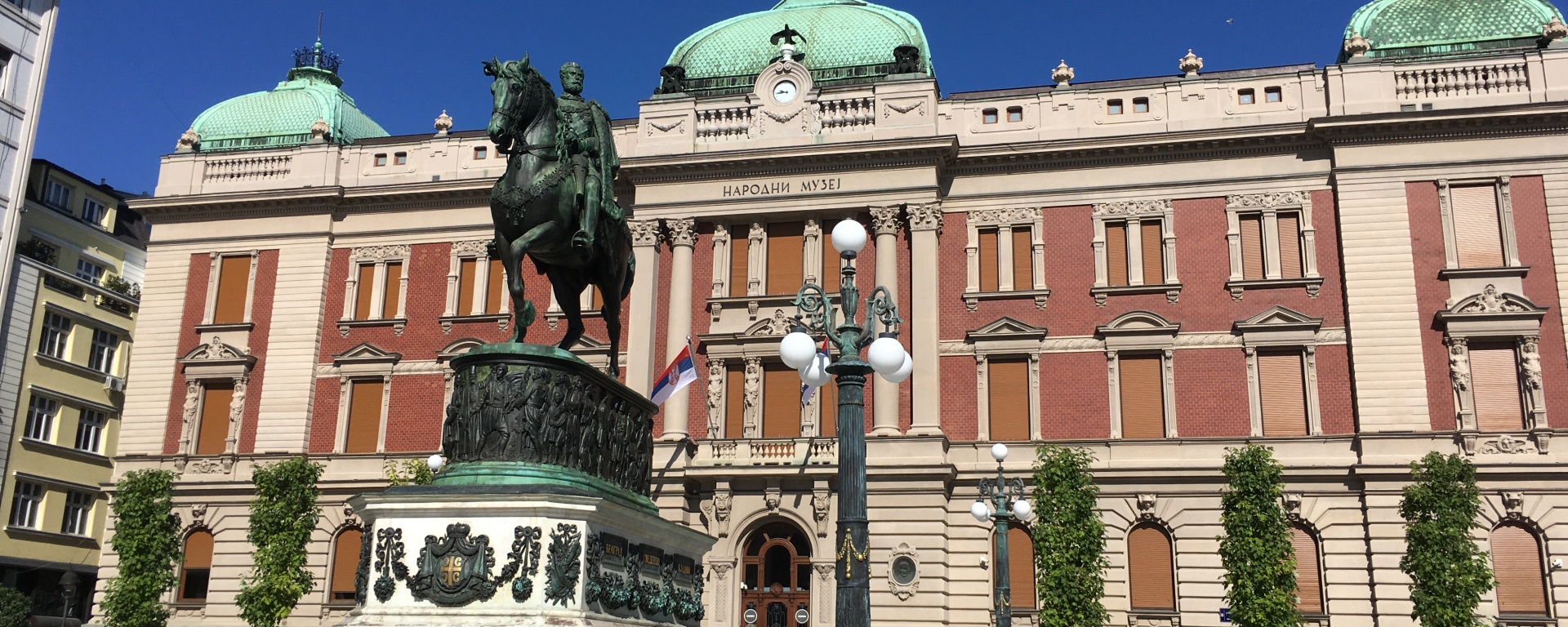“The boundary lines have fallen for me in pleasant places” – Psalm 16:11
A boss of mine once had a wooden railroad map of southeast Europe hanging in his office. It came from a sleeping wagon off the former Yugoslavian railways in the 1970s. I’ve always loved maps of all kinds, especially old ones that show how much our world has changed.
When I was a child in the 1960s, the globe looked quite different. The U.S.S.R. spanned 11 time zones across Asia. The continent of Africa still contained colonial-era place names like Bechuanaland, Rhodesia and South West Africa. And the country of Yugoslavia stretched across southeastern Europe.

I recall learning about this region, known as the Balkans, while studying the first World War. Our history teacher drilled into us the story of the 1914 assassination of Archduke Franz Ferdinand and his lovely, pregnant wife Sophie. Complex political alliances of that era caused a domino effect that drew much of the world into a long and terrible conflict.
For centuries prior to World War I, the Balkan peninsula was part of the vast Ottoman Empire. Its language and culture reflects some of that storied history even today.

Nowadays, like the former Soviet Union, there are seven new countries replacing the old Yugoslavia. For those who like collecting passport stamps, it’s a traveler’s dream come true. However, the global pandemic of 2020 has halted the crossing of many land borders.

I have wanted to travel through the Balkans by rail for quite some time, hoping to retrace the path of the legendary Orient-Express. Not actually one specific train or route, the “Orient-Express” was a series of trains that ran from 1883 for more than 100 years. It connected western European cities like London and Paris with Asian destinations such as Istanbul, Aleppo, Baghdad and Teheran. Although a track upgrade project along this route between Bulgaria and Turkey is now complete, COVID-19 border restrictions eliminated my chance of overland travel.
Needing to renew my permission to drive in Turkey with a new passport stamp, flying was the only choice. For Americans, only a handful of countries are currently open to travelers. The Republic of Serbia, in the Balkans, was one of them. Given that Belgrade, capital of Serbia, was a key city along the legendary Orient-Express route, I chose that spot for a recent brief weekend trip.

The only European city bombed in three different wars during the 20th century, Belgrade has an ancient history dating back to pre-Roman times. Its strategic location at the junction of the Danube and Sava rivers made it important throughout many eras. An impressive fortress dominates that point even today.
Despite the relatively recent bombing of 1999 and the pandemic of 2020, I found a vibrant city of well-dressed people outside enjoying a sunny September Saturday. An interesting free walking tour of the town center captured my imagination, especially the story of the pistol-packing princess who shot down her rival. The compact city zoo, near the fortress, is known for its white and albino animals, including white lions and a rare white buffalo (Belgrade actually translates as “white city”). Another famous zoo resident, an American alligator named Muja, was brought to Belgrade in 1937 and is the world’s oldest in captivity. Amazingly, he survived two bombings of the city that killed many zoo animals and six zookeepers.

While many people speak English, most signs are written in both Cyrillic and Latin. Serbian, one of the southern Slavic languages, is understandable by other former Yugoslavian nationalities. And because I speak Russian, I recognized many of the words. The Ottoman influence means many Turkish words also still exist. Having lived in Turkey, it made for a fun crossword-style guessing game as I strolled around.

Coffee culture abounds in Belgrade, including the largest coffee shop in southeast Europe. Sipping a leisurely latte while people-watching was one of the highlights of my short visit. Another was buying a painting from a local artist, probably my favorite type of travel souvenir. Next time I hope to arrive by train and visit more of this fascinating and diverse part of Europe, crossing more borders by rail and foot.
What countries have changed during your lifetime? For more border crossing adventures in this continuing series, please click here.


